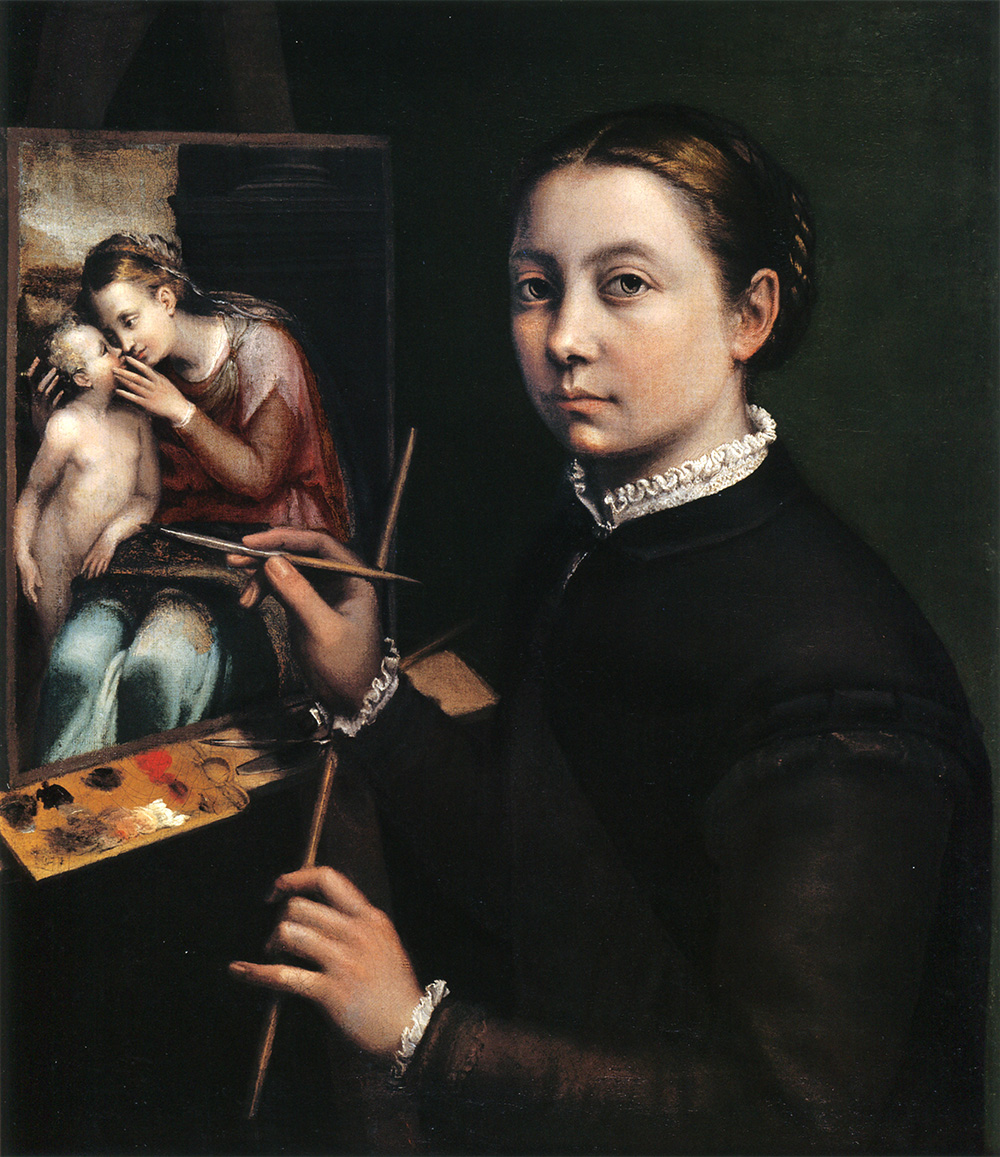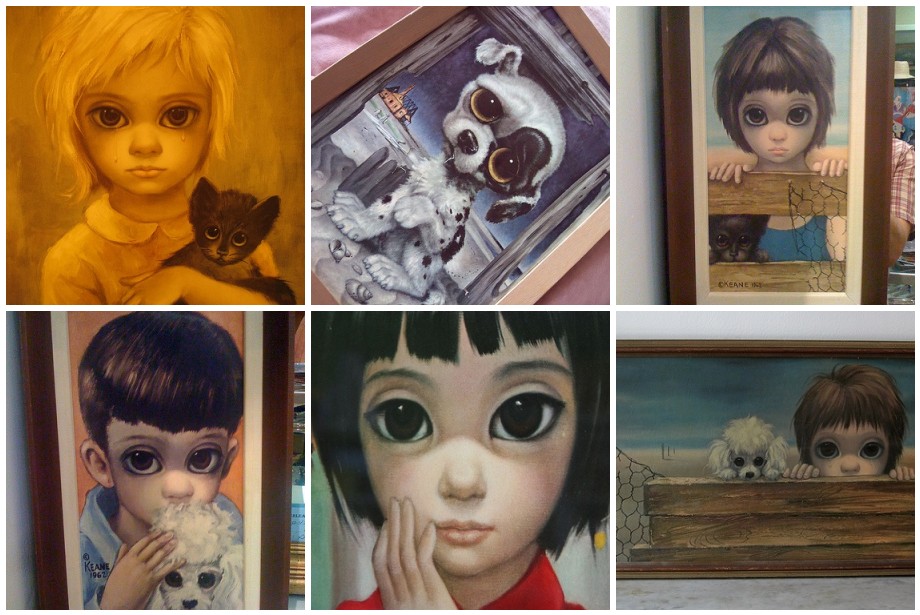Taking advantage of the fact that next year the Museo Nacional del Prado will be 200 years old, and adventuring all that it has prepared for the occasion, we bring to the fore a painful reality: the bicentennial institution exhibits in its halls some 1300 paintings of which only 7 have been executed by women. If we add its warehouses to the museum’s rooms, the panorama is not much more comforting: more than 27500 artistic objects and 57 created by women. To avoid confusion, I repeat: fifty-seven of more than twenty-seven thousand five hundred.
History is painted by the victors
The seven paintings we can see today in the Prado belong to two artists: the Flemish Baroque painter Clara Peeters and the Italian Renaissance Sofonisba Anguissola. The latter was an absolutely respected and recognized painter both by the public and by her professional colleagues. Praised by Michelangelo and mentioned by Vasari in her writings, she became a painter at the court of Philip II in Spain. But none of this was easy. Especially if we take into account that in those years not to depend economically on a man being a woman, socially, was not well seen. For this reason Sofonisba came to court as queen’s lady. Because of that charge, she could live in court and paint, but she was not allowed to sign her paintings, much less charge for them.
She was submitted under the tutelage of the painter Sánchez Coello, who for years was attributed the most famous portrait of Philip II that we can find in the Prado. Many years had to pass before it could be proved – and everyone assumed – that this canvas was painted by Sofonisba Anguissola in 1565. Today no one doubts it, and it is one of the seven paintings attributed to women hanging from the walls of the Prado.
Already in his maturity he managed to have his own workshop and be independent, not without difficulties. Many artists came to her for advice, including a certain Anton Van Dyck. However, unlike this one, with the death of Sofonisba also came oblivion. For years almost all his paintings were attributed to men, to some of the best painters of the time. “The Lady with the Ermine” is a canvas whose authorship is still uncertain today. Some historians attribute it to Sofonisba Anguissola. Others, al Greco, so that we understand the level of which we speak.
And as this example hides among the folds of history hundreds. Maybe thousands. Condemned to exist neither in the present nor in any known past. Names of women with overwhelming talents hidden under those of their father, brother or husband. And those who wanted to leave their name, someone erased it, as someone erased Maruja Mallo from the history books. And Dalí? Lorca? Alberti?
In the shadow of…
And it’s not a problem of the past. In 2016, Japan’s Fumiko Negishi appeared in the newspapers suing Valencian pop artist Antonio de Felipe to admit that she was the author of more than 200 works signed by him. Fumiko was officially a worker in the Valencian’s workshop, but according to her, she created the paintings from scratch, based on an idea of him, at most.
Nor is it a problem of simple authorship. What’s bleeding is the way history has treated women for being women. Only three women currently have a Pritzker prize for architecture. This prize began to be awarded in 1979 and has been received by 3 women out of 45 awardees. In 1991 Denise Scott Brown did not receive the Pritzker, but her husband and partner, the recently deceased Robert Venturi, did, even though all the plans and projects were signed by both of them. How did the jury know which of the two was the good one? Unless, of course, they didn’t look at the plans, but they did look at the panties.
In the 1960s, Margaret Keane developed a series of particularly beautiful and original paintings. But just as it happened in the house of some infanta, of signing, her husband took care of it. Walter Keane convinced his wife that if he signed the paintings she painted, they would earn more money for them. The facts and history, sadly, would prove him right. Margaret spent her whole life in the shadow of her husband, locked in the house painting for 16 hours a day, while Walter got fame, recognition, money and, by the way, some loving touches taking advantage of how busy his wife was giving him all of the above.
She got tired, denounced the farce, divorced and, in court, forced them to demonstrate their artistic abilities to resolve the doubt of authorship. Margaret painted a work of art in less than an hour. Walter refused. Today no one doubts the authorship of Margaret’s works.
But not every story has a happy ending. Camille Claudel is possibly one of the best sculptors in the history of art. Many of her works were attributed to her teacher and lover, Auguste Rodin, because they did not believe that a woman could do that. Camille ended her days in a psychiatric center in spite of being completely sane. The remains of her body disappeared after some works in the cemetery where they were before her brother rescued them. Unlike his corpse, many of his works still stand beside Rodin’s, staring at each other, defying talent with talent.
Male name, female letter
And it is not only in the plastic arts that you need, in addition to skill, a masculine name. Charlotte Brontë published the novel “Jane Eyre” under the name of Currer Bell. Her sister Emily, “Wuthering Heights” like Ellis Bell, and even the third sister Brontë, Anne, signed several of her works as the third brother Bell, named Acton.
The price to pay, however, has been enormous: hundreds of names of authors condemned to oblivion. Names that today could have been referents of so many. Feminine references so necessary, not only as a mirror in which to look at oneself, but also as a weighty argument in an education of so many generations to show that talent does not depend on chromosomes.
Joanne Rowling already published some writing under the male pseudonym “Robert Galbraith”, but when she decided to publish her first novel she wanted to do it with her real name. His editors recommended that he not do so, as readers (they thought) would not want to read a novel written by a woman. Incomprehensibly, it was 1997 and “Harry Potter and the Philosopher’s Stone” was published under the authorship of J. K. Rowling, maintaining an ambiguity about the genre of the writer, since nowhere did the full name of the still unknown author appear. And all this in spite of the fact that Joanne does not have a second name that would give meaning to that K. “Jota Ka” became yet another pseudonym that covered up a truth that still today seems to frighten many: women are creative, and they have talent.
Anonymous was a woman
There are many doubts and few certainties about the sex of the authentic authors of an infinite number of works of art. It was Virginia Woolf who said that the “Anonymous” who signed so many poems must have been a woman. It’s very likely. But it is also easy to assume that many women signed their works with male pseudonyms, or that they allowed their husbands to sign their works instead of them. It’s also easy to understand why. Recognition and money came in larger amounts in this way. The price to pay, however, has been enormous: hundreds of names of authors condemned to oblivion. Names that today could have been referents of so many. Such necessary feminine references, not only as a mirror in which to look at oneself, but also as a weighty argument in an education for so many generations to show that talent does not depend on chromosomes.
Let us reflect, let us doubt, and let us return to the beginning. If you come to the Prado Museum soon to celebrate its 200th anniversary or for whatever reason, ask yourself this question: we already know that only seven of those paintings have been signed by women, but have only seven of those paintings been painted by women?
Author: Álvaro Chico


